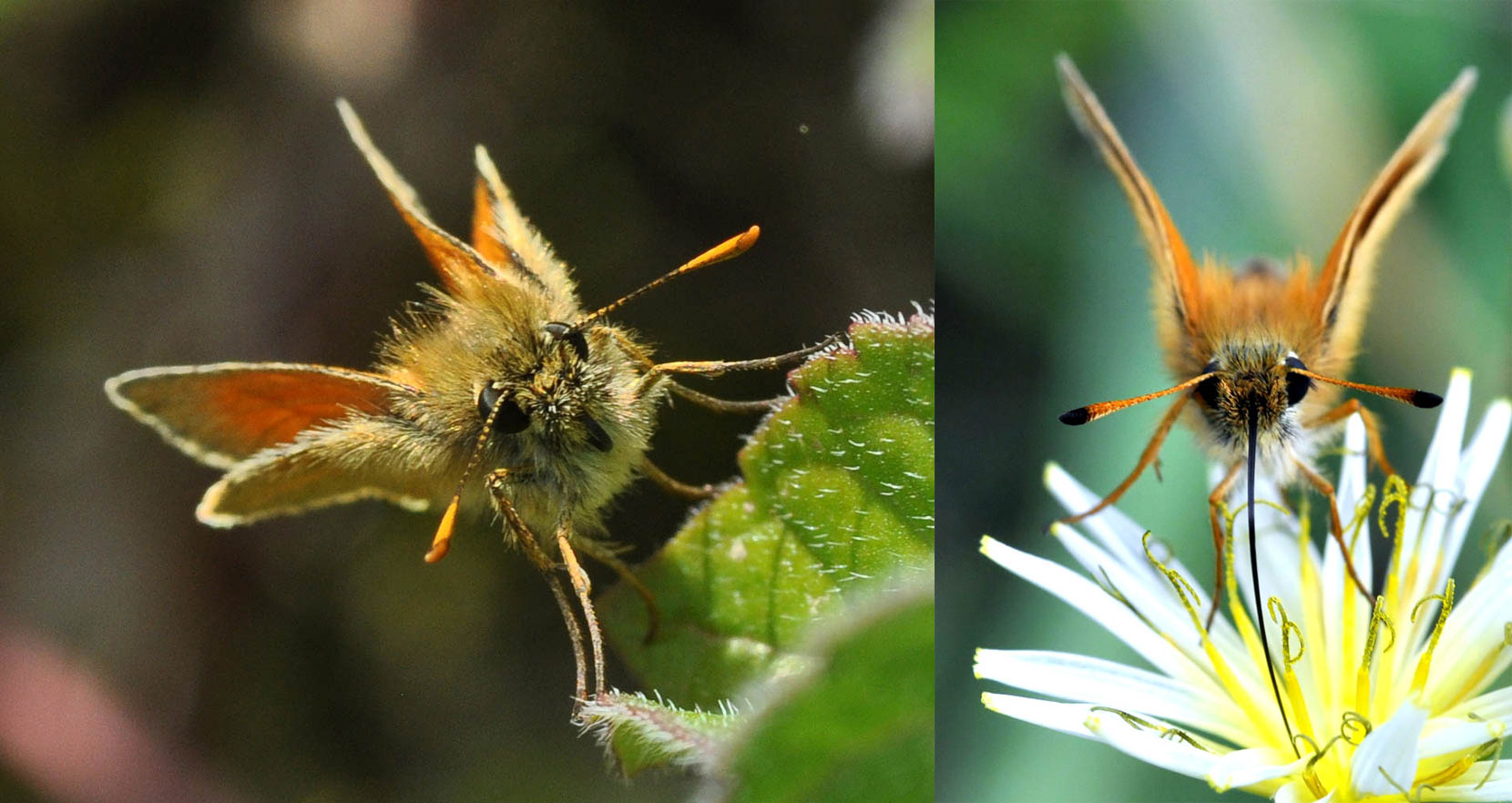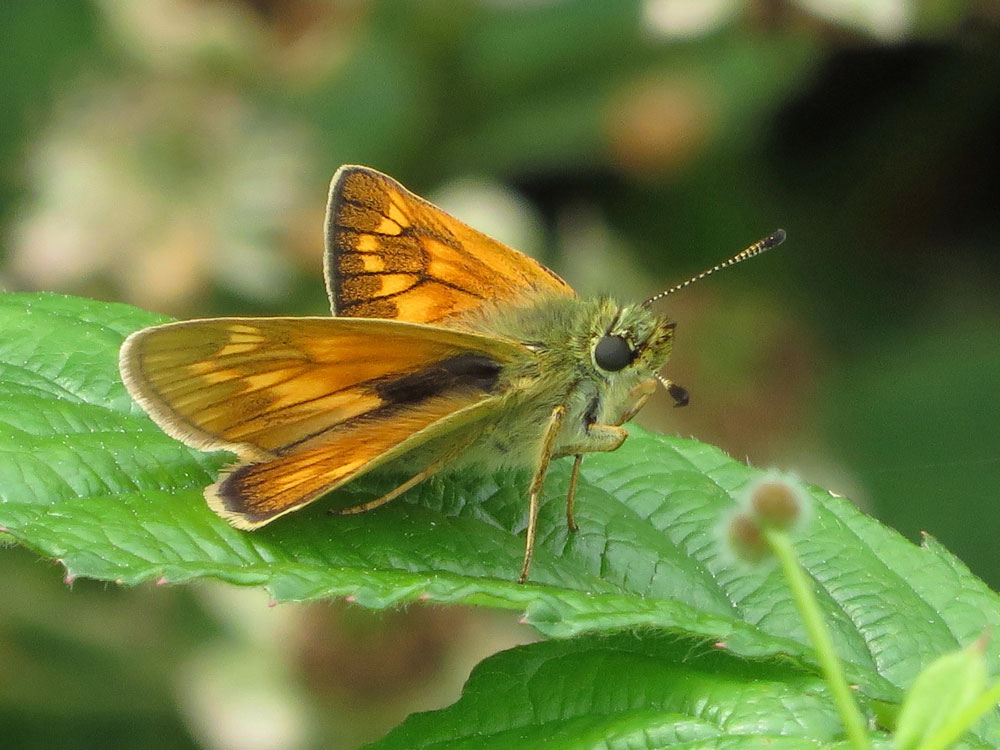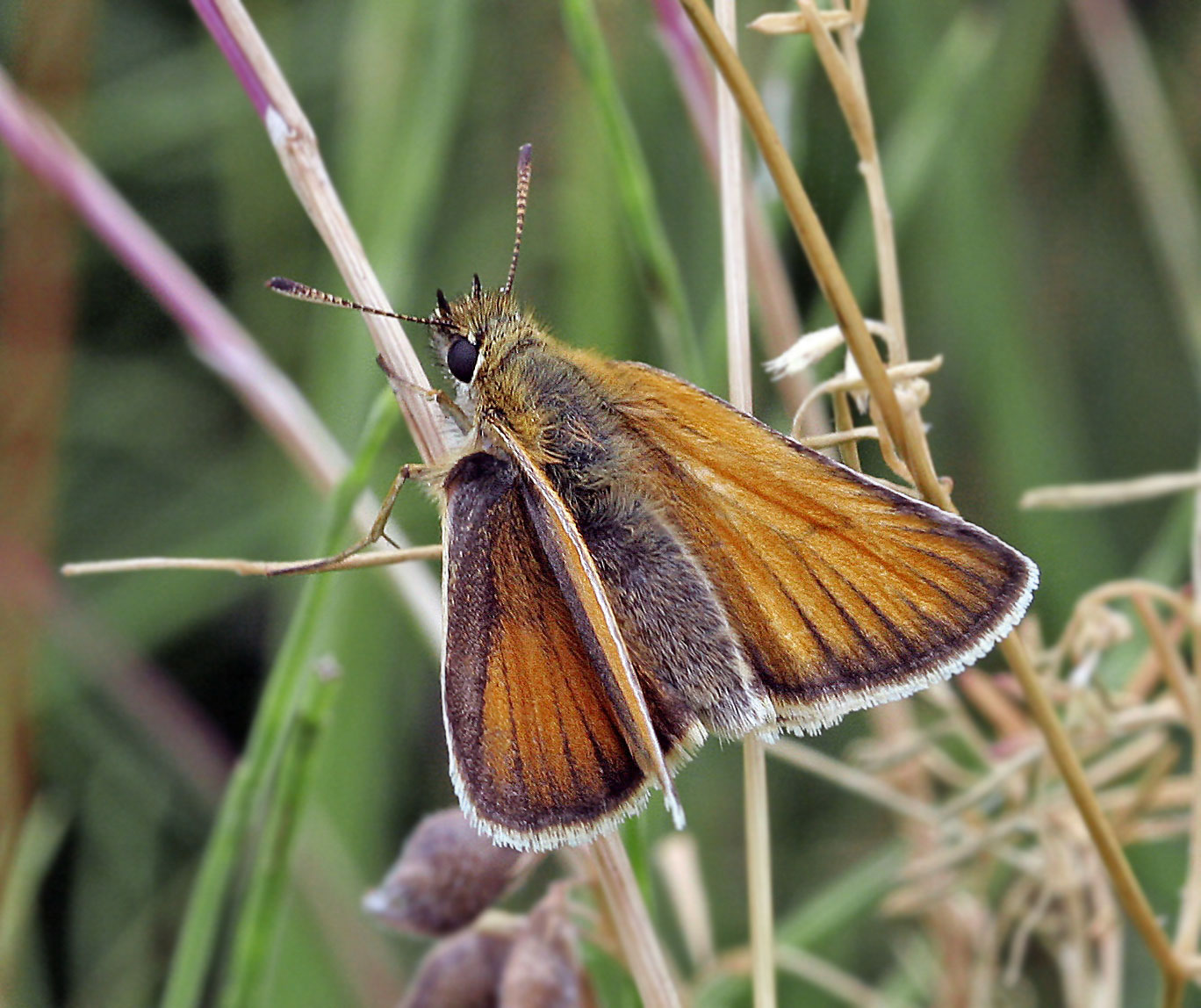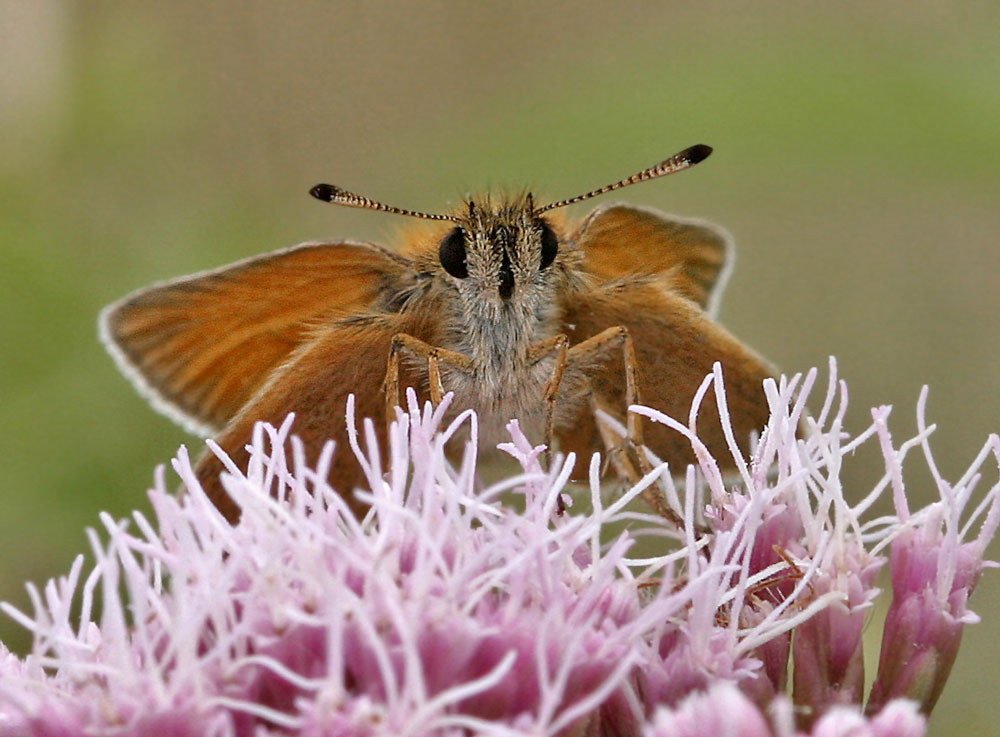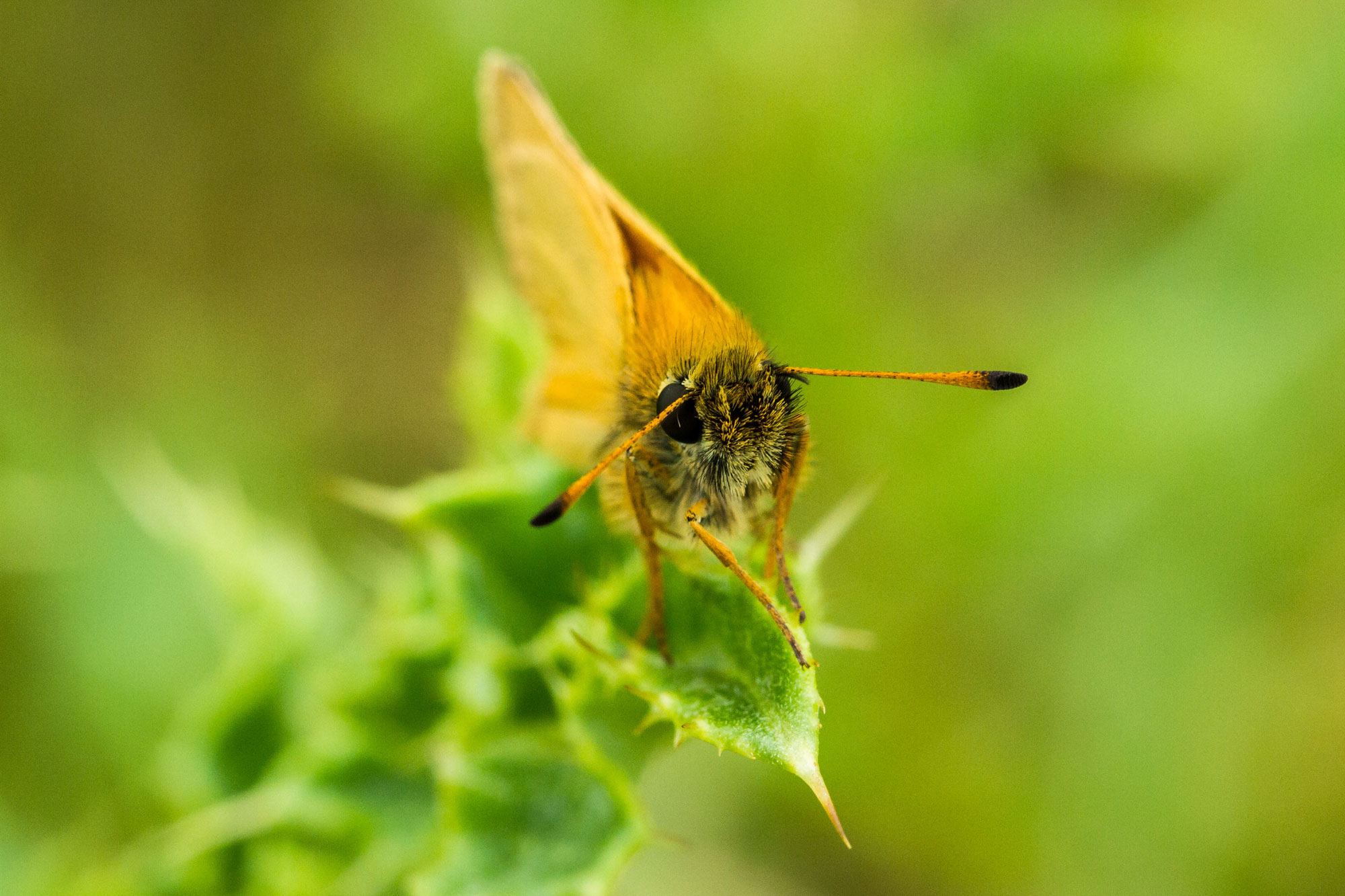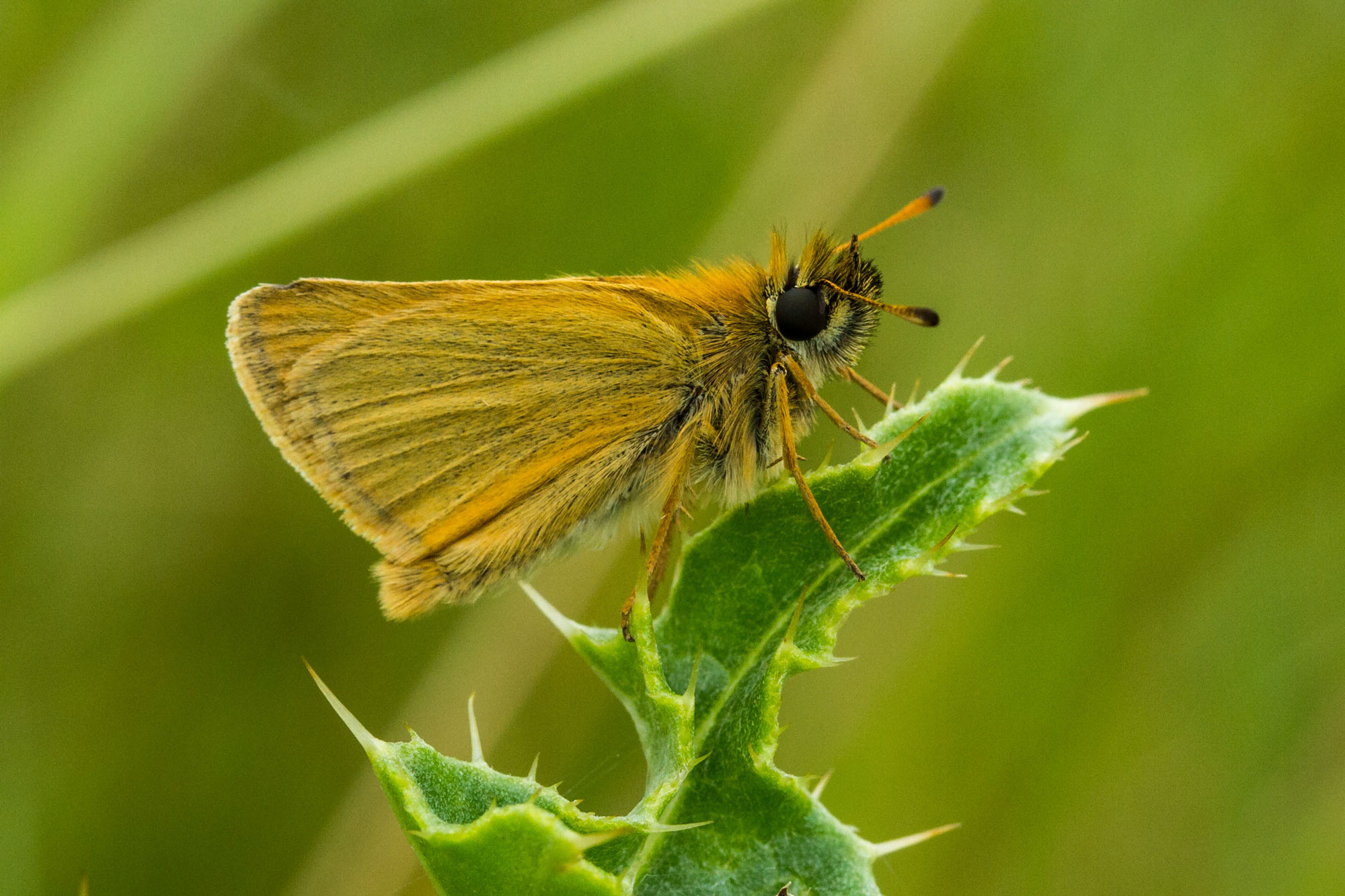
Essex Skipper Thymelicus lineola
Habitat
The Essex Skipper is widespread in SE England, but is extending its range northwards. It is found in tall, dry grassland, roadside verges and woodland rides.
Identification
It is virtually identical to the Small Skipper, but the underside of the tips of the antennae are black in comparison with the orange tips of the Small Skipper. The dark borders on the female sometimes radiate along the veins, and the male has short, straight and finer sex brands.
Flight times
It appears later than the Small Skipper at the end of June and flies until the end of August.
Food plants
Eggs are laid in the sheaths of Cock's-foot, Tor-grass or Creeping Soft-grass.
Distribution
Becoming more widely distribution throughout the region.
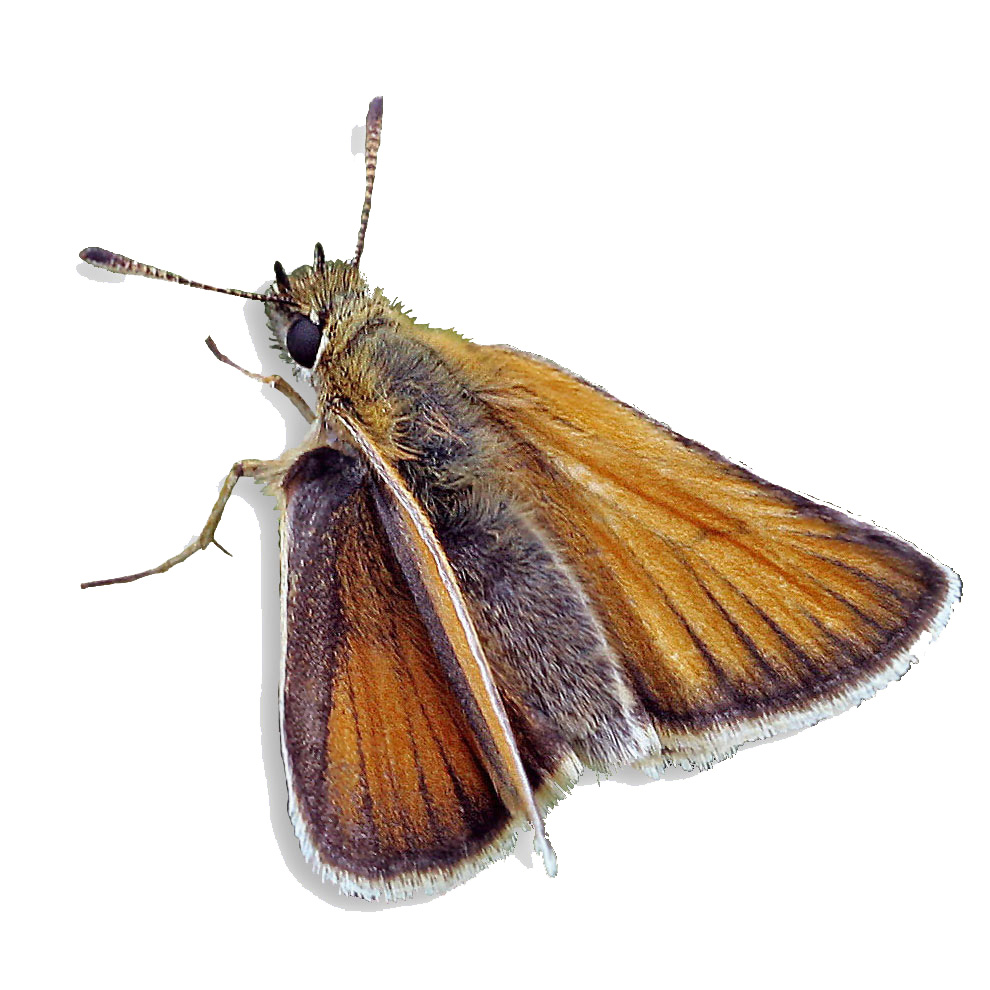
Distribution Maps
2005-09
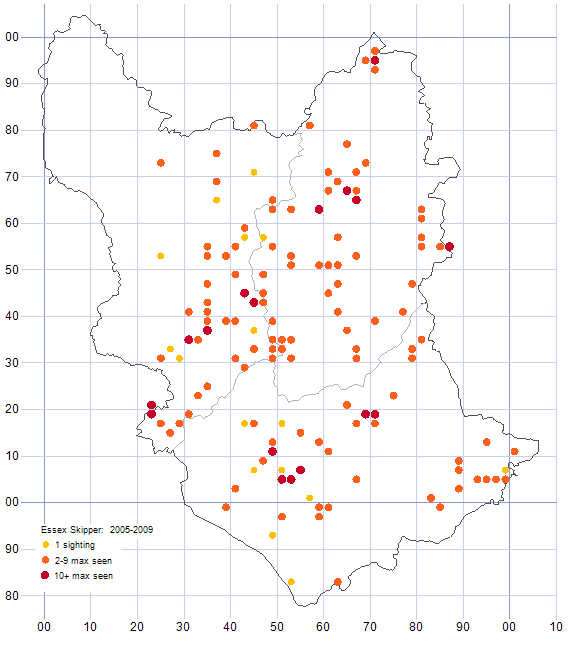
Combined records for the five year period 2005-09
2010-14
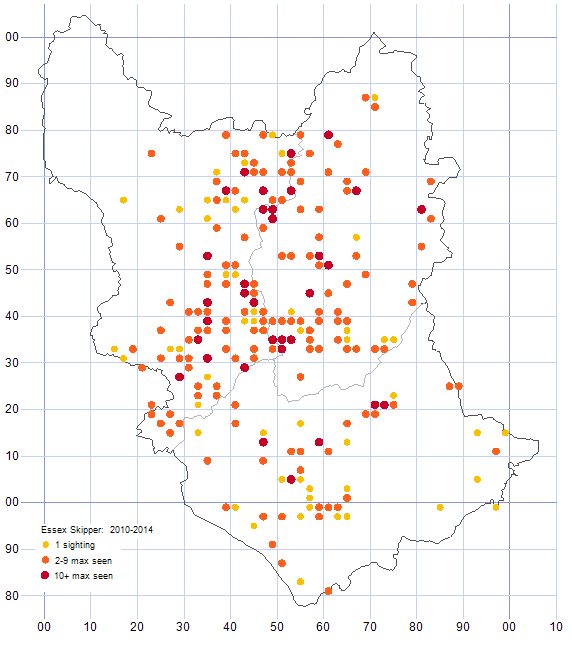
Combined records for the five year period 2010-14
2015-19
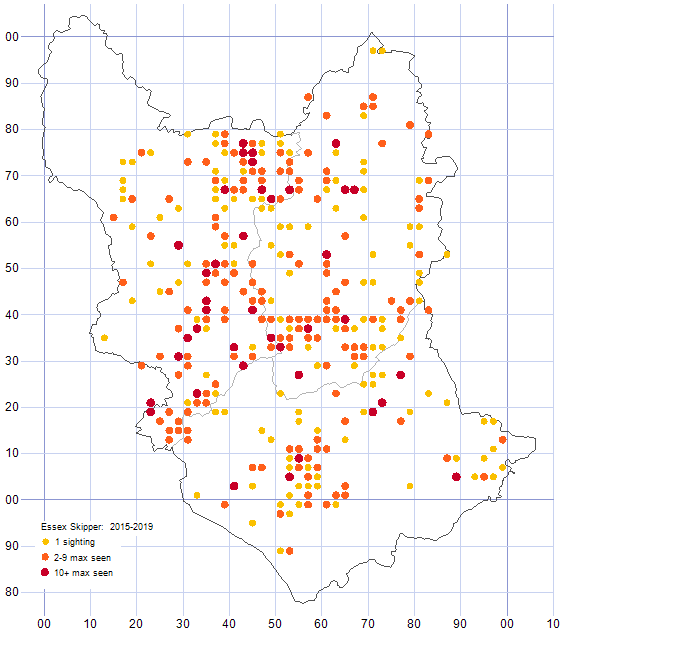
Combined records for the five year period 2015-19
2005-2019
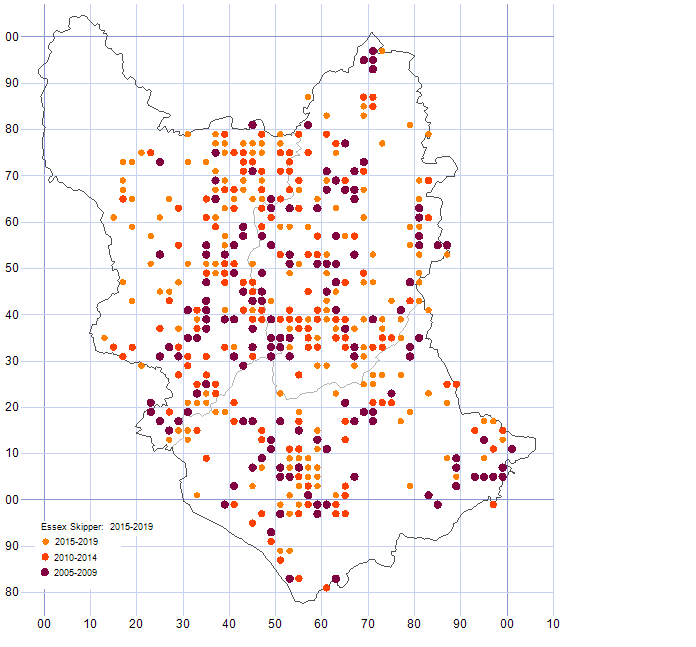
Distribution has consolidated over this fifteen-year period, with further expansion and infilling of its range, particularly in more northerly and westerly parts of Derbyshire.
2020-2024
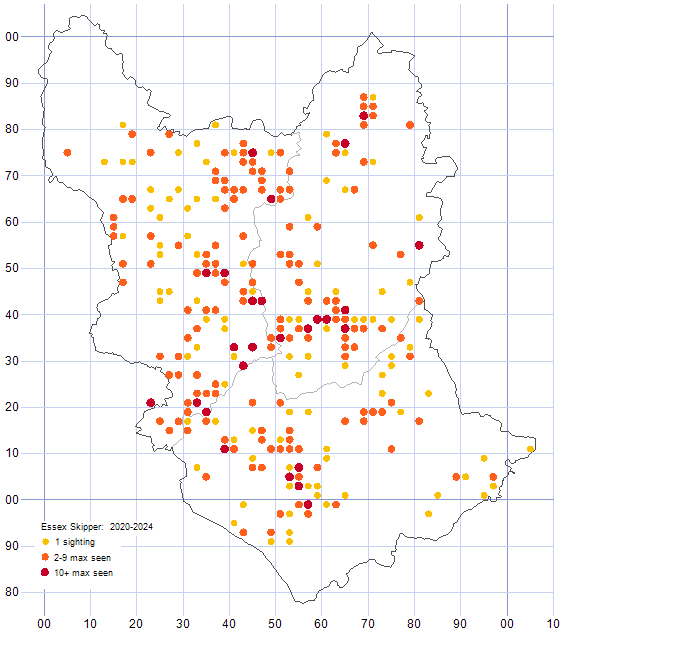
2010-2024
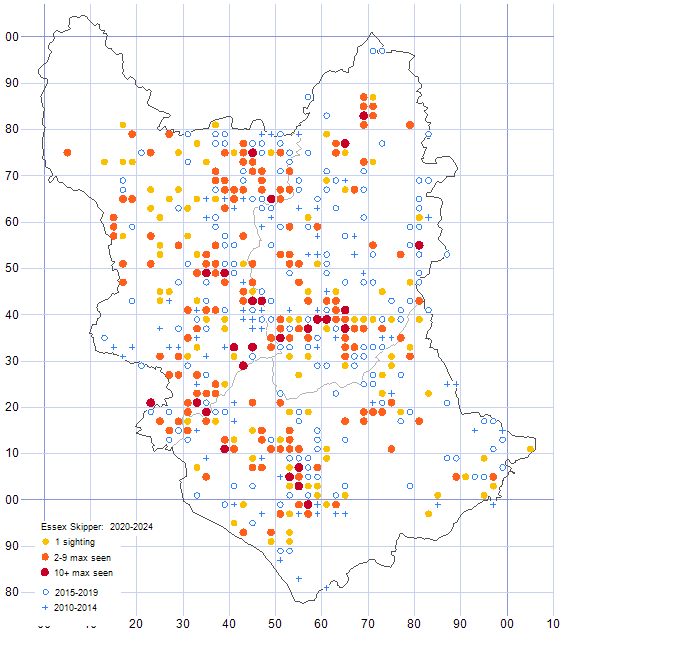
Changes in distribution between 2010-2014, 2015-2019 and 2020-24
Distribution has remained fairly stable over the last five-year period, with slight expansion and infilling of its range, particularly in more northerly and westerly parts of Derbyshire, and into north Nottinghamshire.
2015
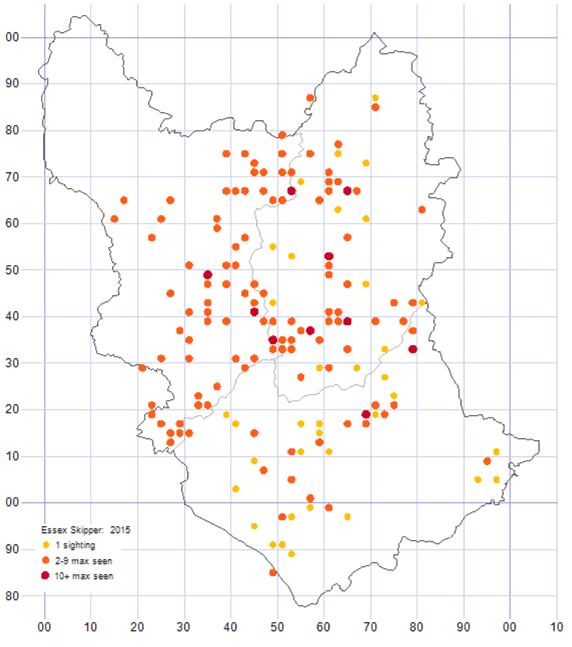
| No of tetrads | 157 |
|---|---|
| First sighting | 14/06/2015 |
| Last sighting | 12/09/2015 |
2016
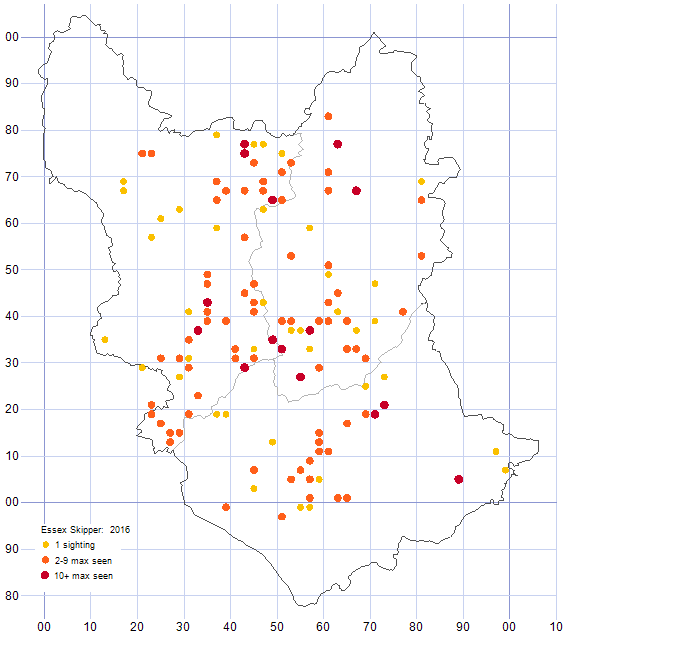
| No of tetrads | 126 |
|---|---|
| First sighting | 09/06/2016 |
| Last sighting | 05/10/2016 |
2017
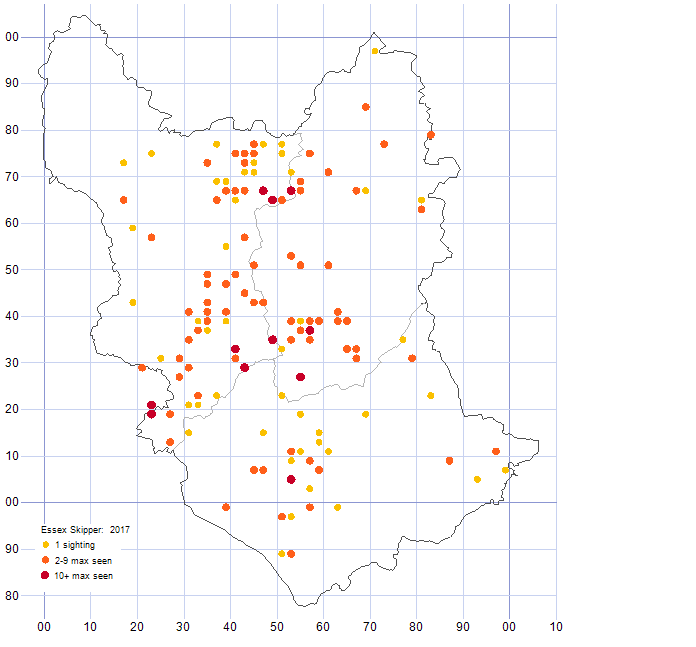
| No of tetrads | 130 |
|---|---|
| First sighting | 12/06/2017 |
| Last sighting | 28/08/2017 |
2018
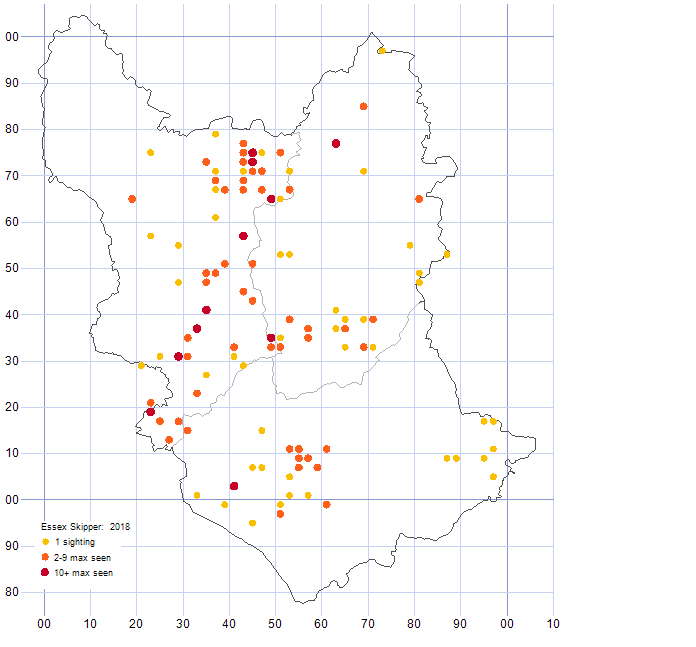
| No of tetrads | 109 |
|---|---|
| First sighting | 31/05/2018 |
| Last sighting | 20/08/2018 |
2019
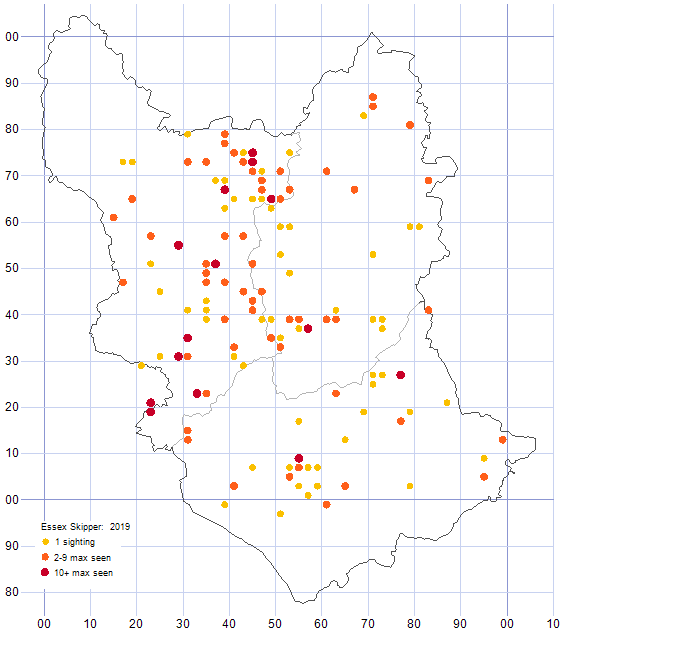
| No of tetrads | 127 |
|---|---|
| First sighting | 27/06/2019 |
| Last sighting | 24/08/2019 |
2020
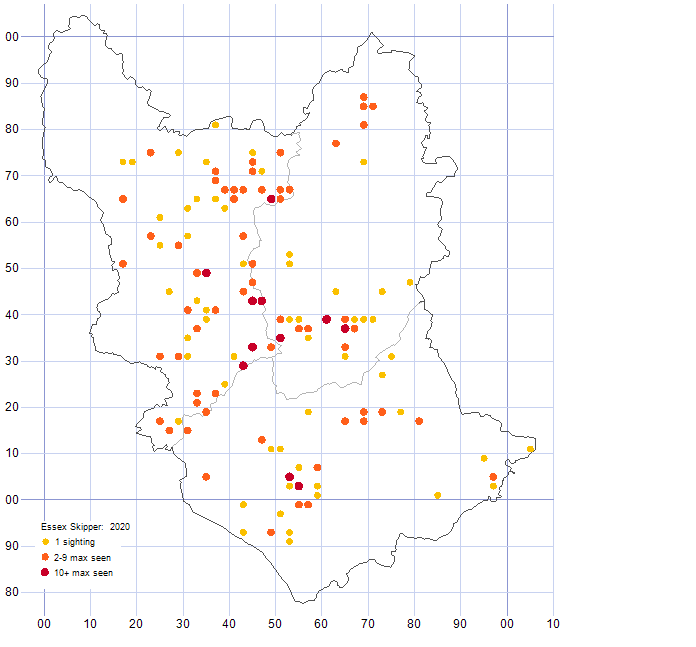
| No of tetrads | 126 |
|---|---|
| First sighting | 02/062020 |
| Last sighting | 24/08/2020 |
2021
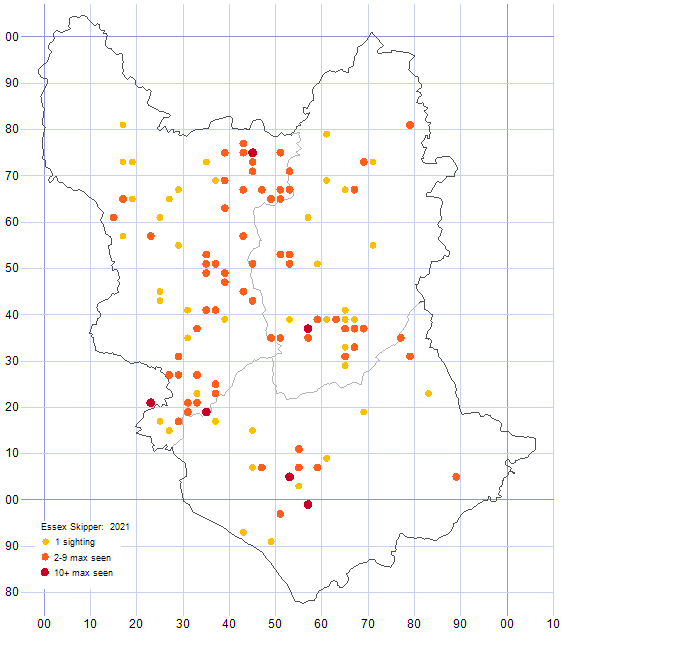
| No of tetrads | 113 |
|---|---|
| First sighting | 16/06/2021 |
| Last sighting | 28/08/2021 |
2022
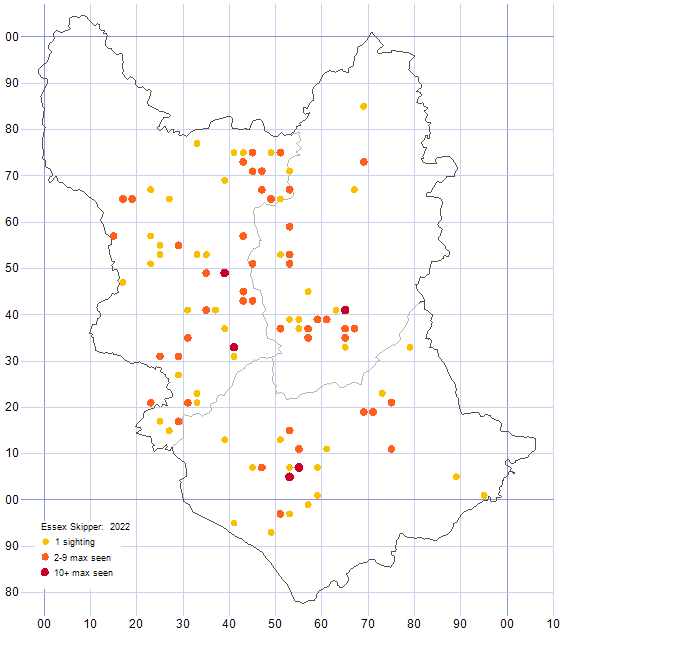
| No of tetrads | 99 |
|---|---|
| First sighting | 17/06/2022 |
| Last sighting | 11/08/2022 |
2023
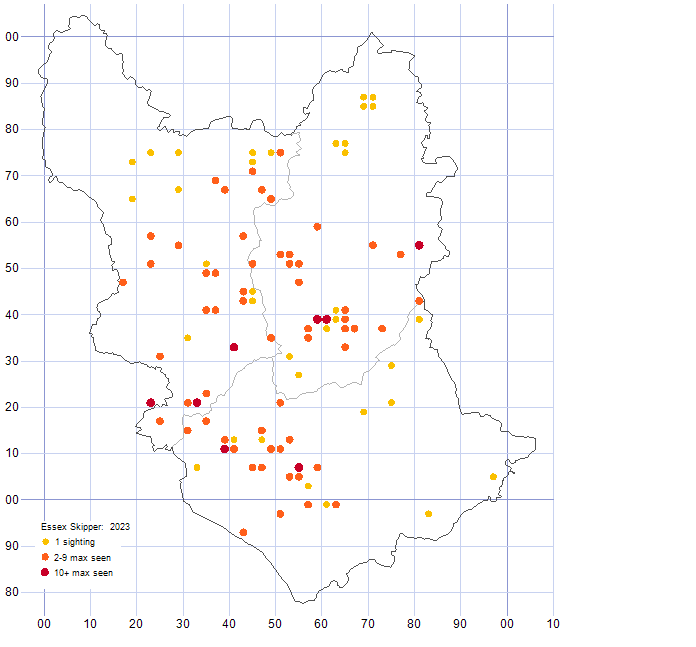
| No of tetrads | 101 |
|---|---|
| First sighting | 14/06/2023 |
| Last sighting | 23/08/2023 |
2024
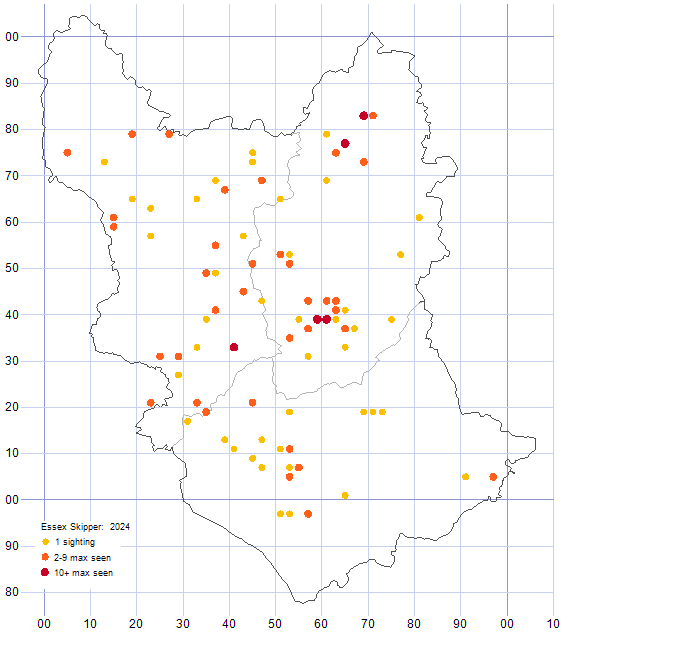
| No of tetrads | 83 |
|---|---|
| First sighting | 24/06/2024 |
| Last sighting | 28/08/2024 |
Photo Gallery
Similar or Easily Confused Species and ID Hints
Small Skipper Thymelicus silvestris
The Small Skipper is very similar to the Essex Skipper in both looks, habitat and flight times. Though the adult Essex Skipper has a shorter flight time, starting later in June and continuing through until late August.
The most striking difference between the adults is the tips of the antennae: in the Small Skipper these are orange-brown, whereas the Essex Skipper's appear to have been dipped in black ink.
The males also differ in the size and shape of the “sex-brands” on the fore wings. In the Small Skipper these are slightly curved, in the Essex Skipper shorter and straight.
The caterpillars are also similar in body markings, but with the Small Skippers head being green and the Essex Skipper striped with brown.
Large Skipper Ochlodes venata
A larger and more widespread orange skipper, the Large Skipper also flies and feeds in similar habitats and times as the Small Skipper and Essex Skipper. All three skippers rest in a distinctive pose with their fore and hind wings held at different angles. The Large Skipper is distinguished from the others by being slightly larger, and also having brighter undersides and more variegated markings on the upper wings.
